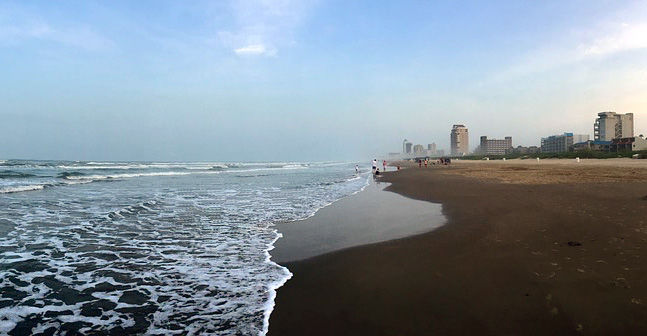SOUTH PADRE ISLAND — Whether their trip is made to catch a wave, build a sandcastle or take a walk by the sea, hundreds of tourists and residents flock to local beaches each summer.
And in order to preserve beachgoers visits, several coastal communities around the country have taken action to protect, preserve and restore their beaches’ shorelines.
One of those communities is South Padre Island.
The City of South Padre Island received the 2019 Best Restored Beaches award from the American Shore and Beach Preservation Association (ASBPA) earlier this week.
The Island was one of four recipients around the nation that received the honor.
Winners will be honored during ASBPA’s annual Coastal Summit that will be held in Washington, D.C., in March 2020.
The Best Restored Beaches award serves as a way to highlight the value of restored beaches.
Kristina Boburka, City of South Padre Island’s Interim Shoreline Director, said the department is very excited to be recognized for their restoration efforts.
“As a coastal community, we fight issues such as erosion and sea level rise,” she said. “Our efforts at protecting and maintaining the beach ensures the community will continue to have memorable experiences.”
The Island’s nominated project
The Island’s Beneficial Use of Dredged Material (BUDM) project was selected because of its use of “innovative methods.”
The nearshore berm and sand tracing study was assembled within six months through coordination efforts between city officials, the U.S. Army Corps of Engineers, the U.S. Geological Survey, Partrac Geomarine Inc. and Texas A&M University at Galveston.
According to the ASBPA, the Island’s BUDM project helped many aspects of the area such as widening a portion of the city’s beach, increasing beach access, improving economic activity and associated tax revenues, reducing the cost of post-storm response and cutting future erosion response costs.
“The beach is a huge aspect for our economy because it’s tourist-driven,” Boburka said. “We rely on our visitors to come to our beach every year so it’s very important we maintain it.”
To enter the competition, coastal communities nominated projects that were judged by a panel of coastal managers and scientists.
According to ASBPA officials, candidates were judged based on the economic and ecological benefits the beach brings its community, the short-and long-term success of the restoration project and the challenges each community overcame during the course of the project.
Peter Seidle, chair of the Best Restored Beach Committee, said he looked for applicants’ commitment and dedication to their projects.
“I want the applicant to make me love his or her beach,” he said. “The committee also looks for unique solutions to unique problems, recognizing that every beach has its own challenges and opportunities that can be addressed and augmented by a well-executed restoration project.”
The benefits of healthy coasts
• Storm protection — A wide sandy beach helps separate storm waves and other coastal hazards from upland structures and infrastructure.
• Habitat restoration — Numerous species rely on wide, healthy beaches as a place to live, feed, rest and nest.
• Recreation — America’s beaches are its largest national park, more than 40 percent higher than more than the numbers of visitors to all our federal and state parks and theme parks combined.
• Sea level rise — As climate changes trigger both higher sea levels and stronger storm events, a wide sandy beach remains the best protection from both encroaching seas and storm-driven waves. By adjusting their shoreline designs, communities across the country are able to protect upland habitat and properties by raising the profile of their beaches to counter projected sea level rise.
• Spend millions to save billions — Investing in infrastructure now saves money in re-building later.
Source: The American Shore and Beach Preservation Association





